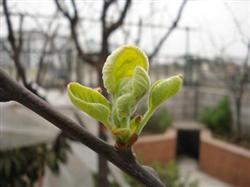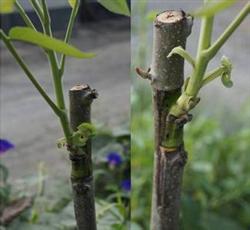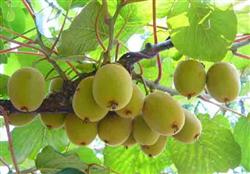Key points of planting techniques of kiwifruit (part two)

In the construction of the garden, the root system of kiwifruit is fleshy, especially fragile, not only afraid of waterlogging, but also afraid of high temperature and drought, new shoots are not only afraid of strong wind breaking, but also afraid of late spring cold or low temperature freezing injury. Suitable for planting in sub-high mountain areas (800-1400 meters above sea level), choose places with deep soil, fertile soil, loose texture, good drainage and convenient transportation to build a garden, such as cultivating kiwifruit in low mountains, hills or plains, we must have appropriate drainage and irrigation facilities to ensure that there are no stains in the rainy season and timely irrigation in the dry season. It is best to build windbreaks around the park. During the planting period, the best planting period in the southern producing area is from the defoliation of kiwifruit to the sprouting of kiwifruit in the early spring of the following year, that is, from early December to the first and middle of February, the earlier the better. The configuration of pollination trees kiwifruit is a dioecious fruit tree, and the selection and configuration of male pollination plants is one of the conditions to ensure normal fruit. The selection of male plants should be the same as or slightly earlier than the main varieties, with a large amount of pollen and a long florescence. The ratio of female to male plant is 6 ∶ 1 or 5 ∶ 1, which has high yield and good quality. Generally, the planting density is closely related to the cultivation frame type, the hedge density is 2 m × 4 m, the T-shaped frame planting density is 3 m × 4 m, the planting density is about 56 plants per mu, and the flat roof scaffolding planting density is 3 m × 5 m. The scaffold is generally set up in the winter of the same year after planting, which is divided into pillars (cement columns, wooden columns, stone columns, bamboo columns and associated trees, etc.), beams (cement columns, wooden columns, bamboo and metal, etc.), and the surface of the shed is made of iron wire. According to the local situation, wood frame, steel frame, concrete frame and accompanying tree frame are selected, and the frame type is mainly "Y" frame and "T" frame. There are three kinds of frame commonly used in kiwifruit production, which are hedge frame, T-shaped frame and top frame. Fence: the pillar is 2.6 meters long, 12 centimeters thick, 80 centimeters buried, and the ground is 1.8 meters high. Four lines of antirust iron wire are drawn on the shelf surface from bottom to top, and the first wire is 60 cm from the ground. A pillar is erected every 8 meters, and the branches are tied to the wire of the frame. T-frame: a horizontal beam is arranged at the top of the upright pillar to form a small T-shaped bracket. The total length of the pillar is 2.8 meters, the total length of the beam is 1.5 meters, three high-strength antirust iron wires are drawn on the beam, the depth of the pillar is 80 cm, and the net height of the upper part is 2 meters, with a pillar every 6 meters. Flat-roofed scaffolding: the frame is 2 meters high and has pillars every 6 meters. The pillars in the whole garden can be arranged in a square. The pillar has a total length of 2.8 meters and is buried in 80 centimeters. The pillars around the scaffolding are connected by triangular iron or steel bar, and the pillars are drawn by thick and thin iron wire to form a flat-roofed scaffolding. The main diseases and insect pests include flower rot, anthracnose, vine blight, brown spot, fruit soft rot, Phytophthora blight, root rot and beetles, wing moths, flower bud maggots, fruit sucking armyworm and so on. Comprehensive control methods should be adopted to strengthen management, strengthen tree potential, strengthen soil disinfection and strengthen prevention. In addition, fruit sunburn mainly strengthens tree potential management and reasonable pruning. During the period of fruit growth and development (late August), bagging can prevent sunburn.
- Prev

Square Bud grafting technique of Walnut
The square bud grafting technique of walnut has the advantages of high survival rate, labor-saving and convenient operation, and the technology is easy to master and popularize, which is suitable for planting young trees and nursery seedlings. The square budding technology is introduced as follows: 1. Grafting time. It can be carried out from late May to mid-July, but the best time is in June.
- Next

Prevention and Control of Diseases and insect pests in kiwifruit Orchard in Winter
With the expansion of kiwifruit cultivation area and fruit-hanging area, the occurrence and harm of diseases and insect pests are becoming more and more serious. The prevention and control of diseases and insect pests in kiwifruit orchard in winter can achieve twice the result with half the effort in promoting the transformation of tree potential, the control of diseases and insect pests in spring and summer and the healthy growth of kiwifruit trees. According to the investigation of our station in recent years, it has been found.
Related
- Moge, come on! The staff of the peasant association in the producing area of cantaloupe were frightened when the crowd gathered.
- Causes and Solutions of low Fruit setting rate of Apple
- Symptoms and control measures of passion fruit virus disease
- Fruit growing lesson: how do apple orchards keep high yields?
- Can you build orchards in the mountains? What are the pros and cons?
- How to manage the coloring period of Crisson grape?
- This paper introduces the processing technology of two kinds of fig products.
- How much is a month for retired teachers in rural areas by 2020?
- How can strawberry planting increase sugar content? We should pay attention to management in many aspects.
- What are the cultivation techniques on how to improve the yield of golden fruit?

